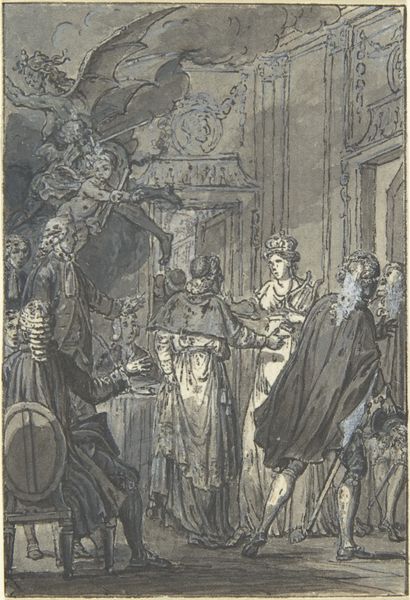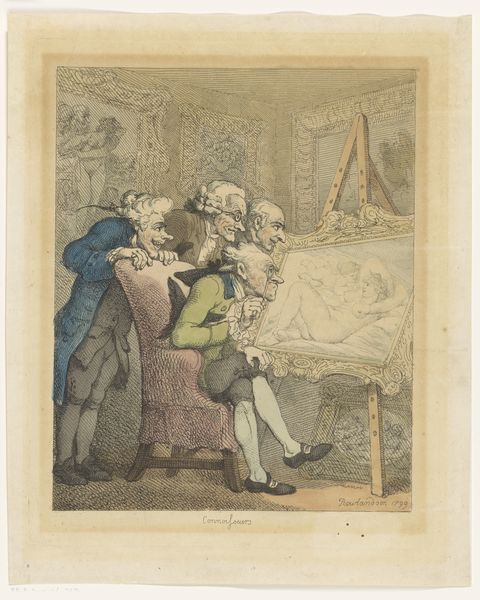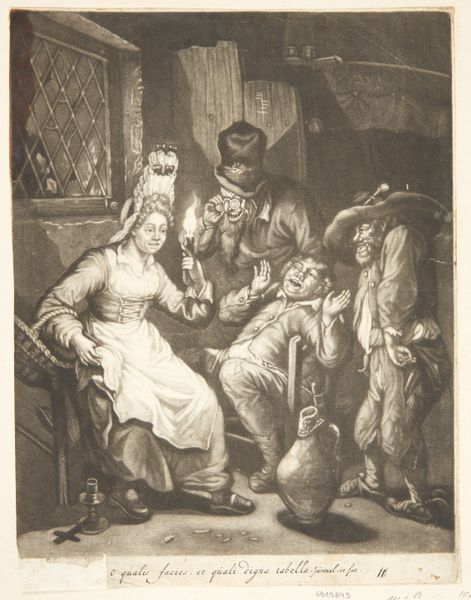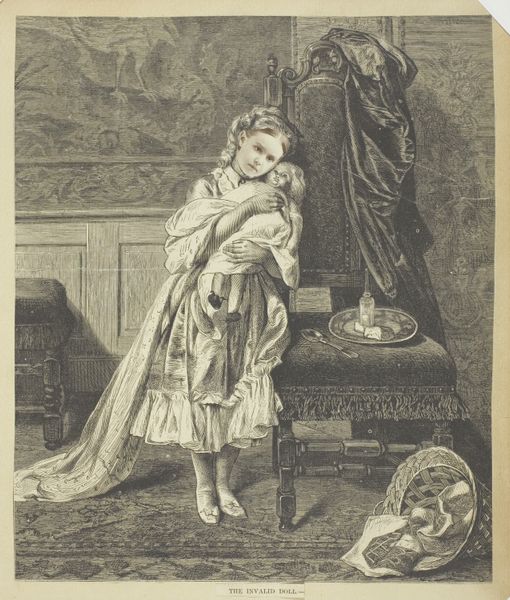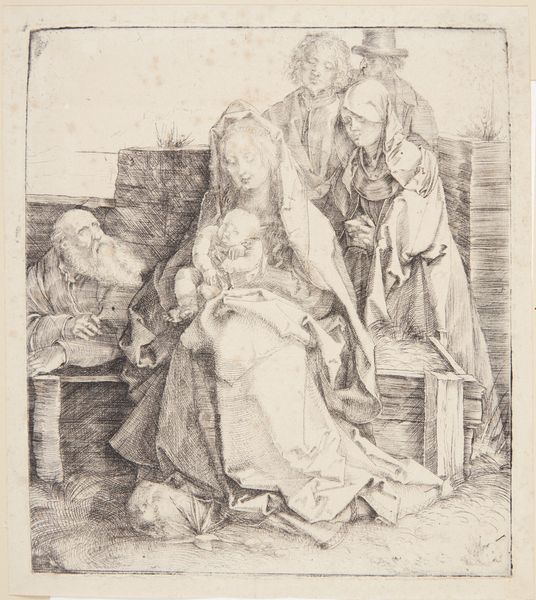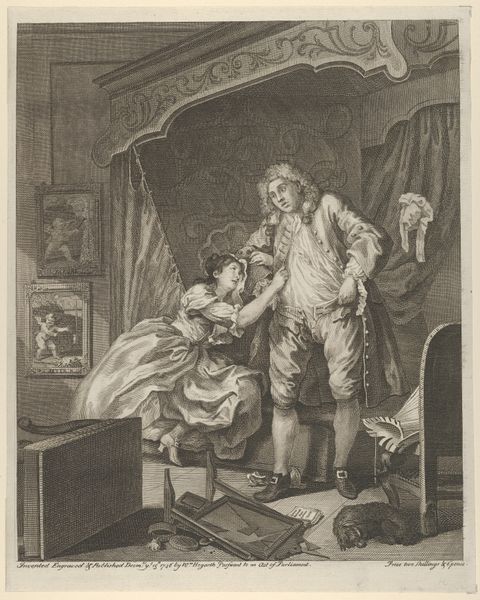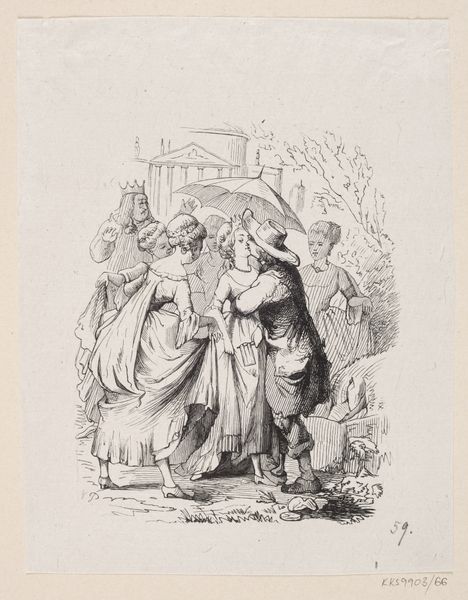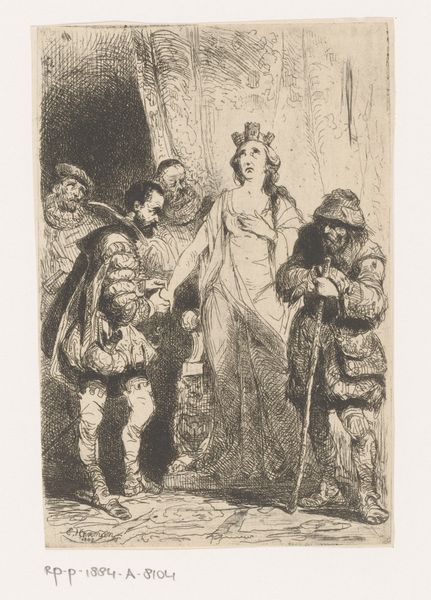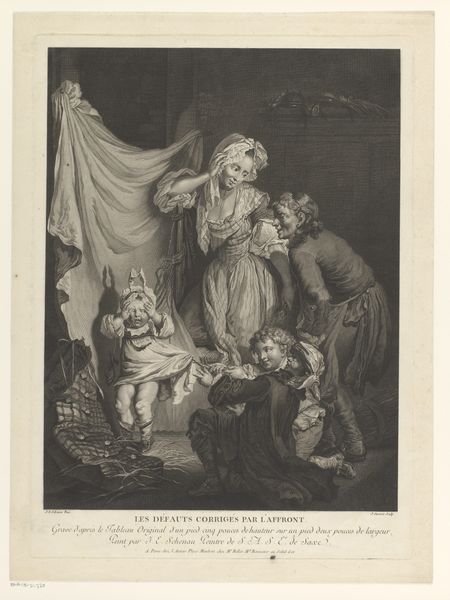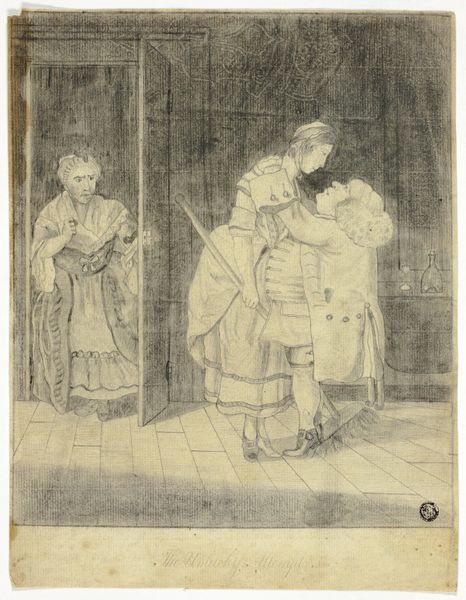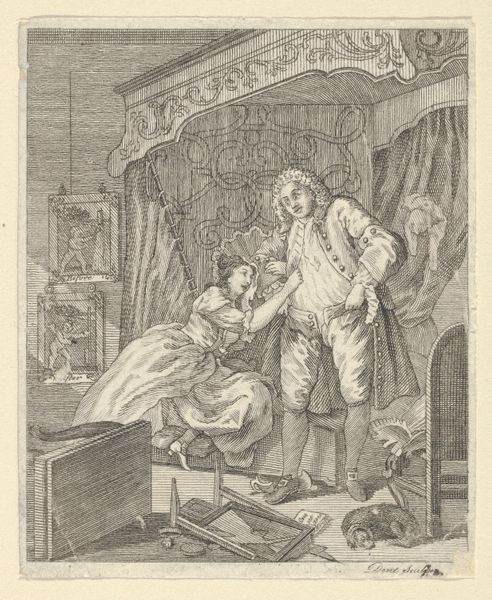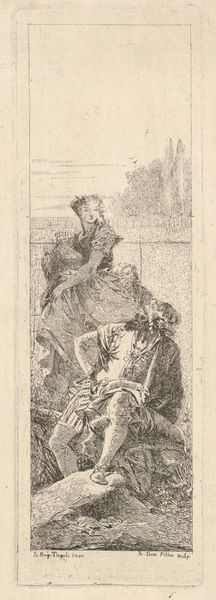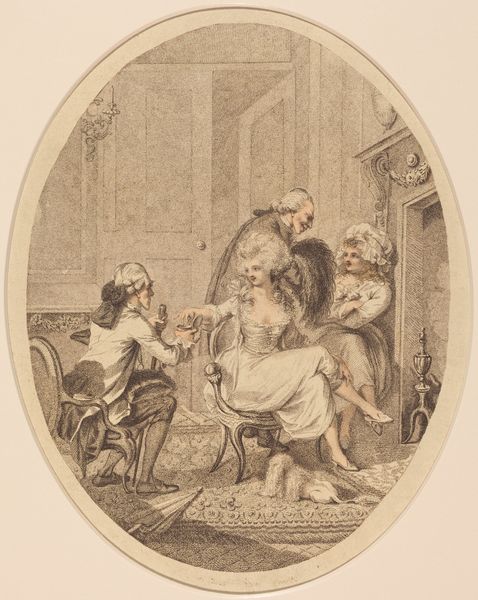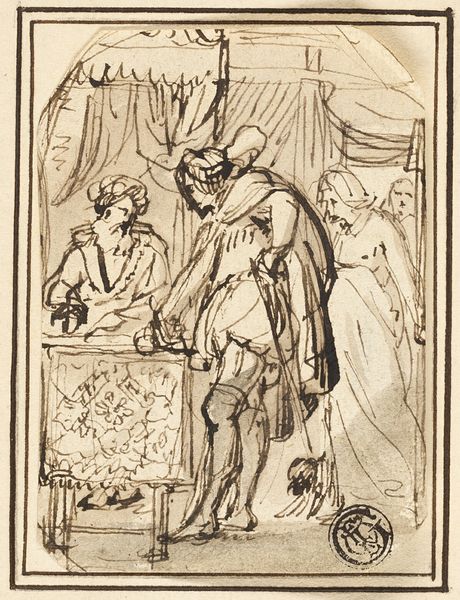
A Woman at her Toilet with a Maid, a Boy, a Dog and a Young Soldier; verso: A Sketch for a Similar Composition 1770
0:00
0:00
drawing, ink, pen, charcoal
#
portrait
#
drawing
#
dog
#
landscape
#
boy
#
charcoal drawing
#
figuration
#
ink
#
soldier
#
pen
#
genre-painting
#
charcoal
#
rococo
Dimensions: sheet: 13 7/16 x 9 3/16 in. (34.1 x 23.4 cm)
Copyright: Public Domain
Curator: This drawing, executed around 1770, is entitled "A Woman at her Toilet with a Maid, a Boy, a Dog and a Young Soldier" by Johann Eleazar Zeissig, called Schenau. It's rendered in pen, ink, and charcoal. Editor: It strikes me immediately as an exercise in intimacy, albeit a very mannered and staged one. The tonal range, created by these dark lines, is quite soft, but that does not veil the underlying statement. Curator: Indeed. Zeissig was deeply embedded within the Rococo movement, a period characterized by its ornamental and theatrical sensibilities. One sees that reflected in this seemingly private moment. It mirrors an idealized domesticity popular amongst the aristocracy. Note how the dog almost blends into the furniture; it's all of a piece, suggesting social harmony. Editor: A point well-taken! The compositional arrangement reinforces that— the woman is placed centrally, almost like a still point, from which all other elements seem to spiral. The young boy seems subordinate to the female subject's importance. It is, therefore, as much about power dynamics as it is about aesthetics. The mirror reinforces the theme of staged appearance versus intimate life. Curator: Exactly. And the material choices – pen, ink, charcoal – lend a certain delicacy that further enhances the intimacy. The subtle gradations achieved with the charcoal work together with the calligraphic touch of ink. It reflects the period’s obsession with surface and refined pleasure. Editor: Although there is refinement, there is also an anxious touch in these details, such as the slightly disjointed perspective of the architecture of the surrounding chamber and curtains. But such subtle anxiety of spatial composition reflects an art form trying to figure itself out and transition towards more austere and grounded expressions. Curator: It reflects larger shifts, most definitely, regarding social structures. As a Rococo master, he stood on a fault line about to rupture completely and violently as society and state transitioned in the wake of revolution. That awareness and underlying anxiety comes through beautifully as much in what he depicted as what he omitted, and the subtle anxiety it produced aesthetically. Editor: An intriguing piece offering rich social, aesthetic, and technical narratives, so skillfully created by Zeissig. Curator: Precisely, a visual record, pregnant with layers of historical significance, deftly told through form and composition.
Comments
No comments
Be the first to comment and join the conversation on the ultimate creative platform.
